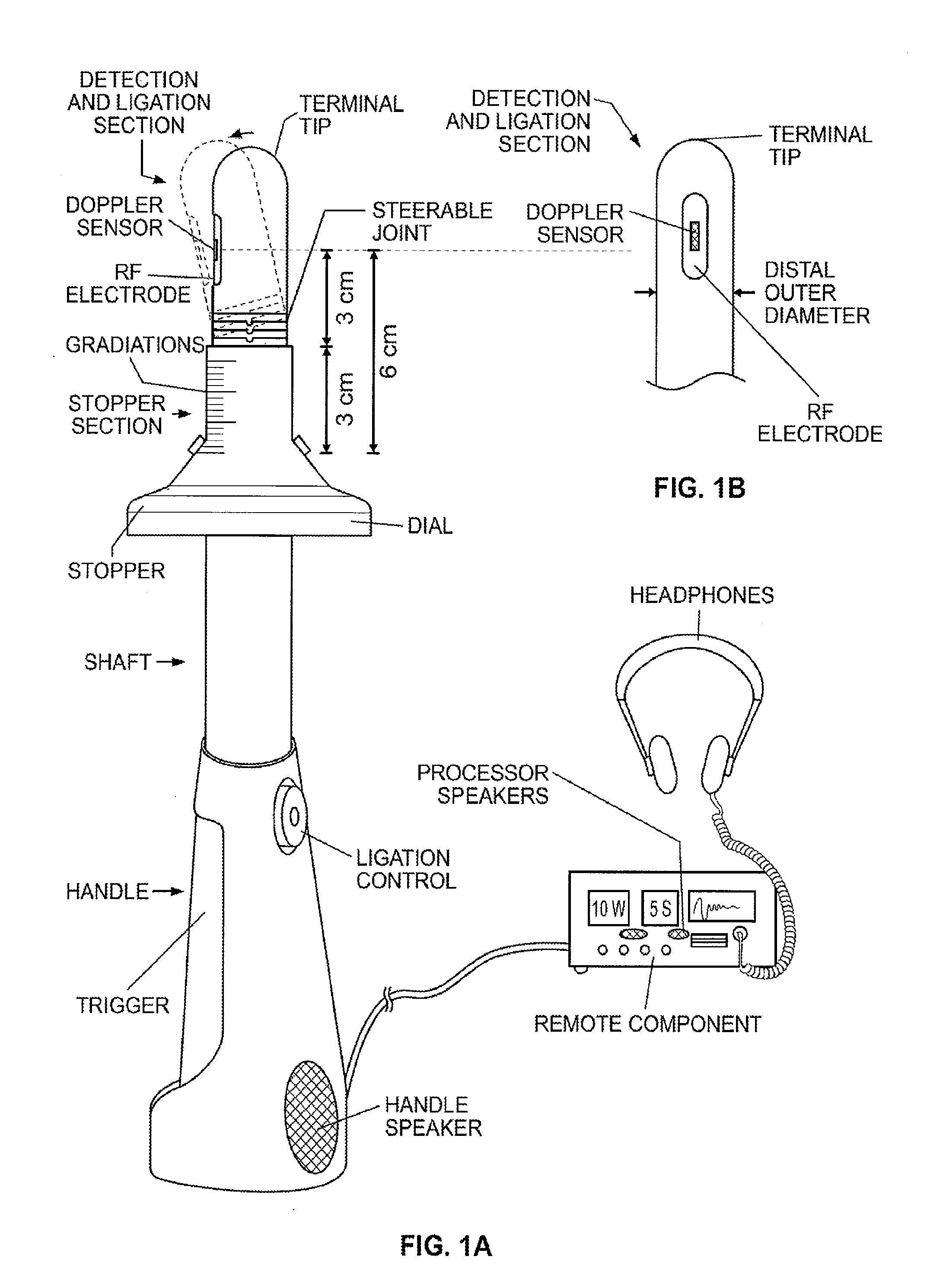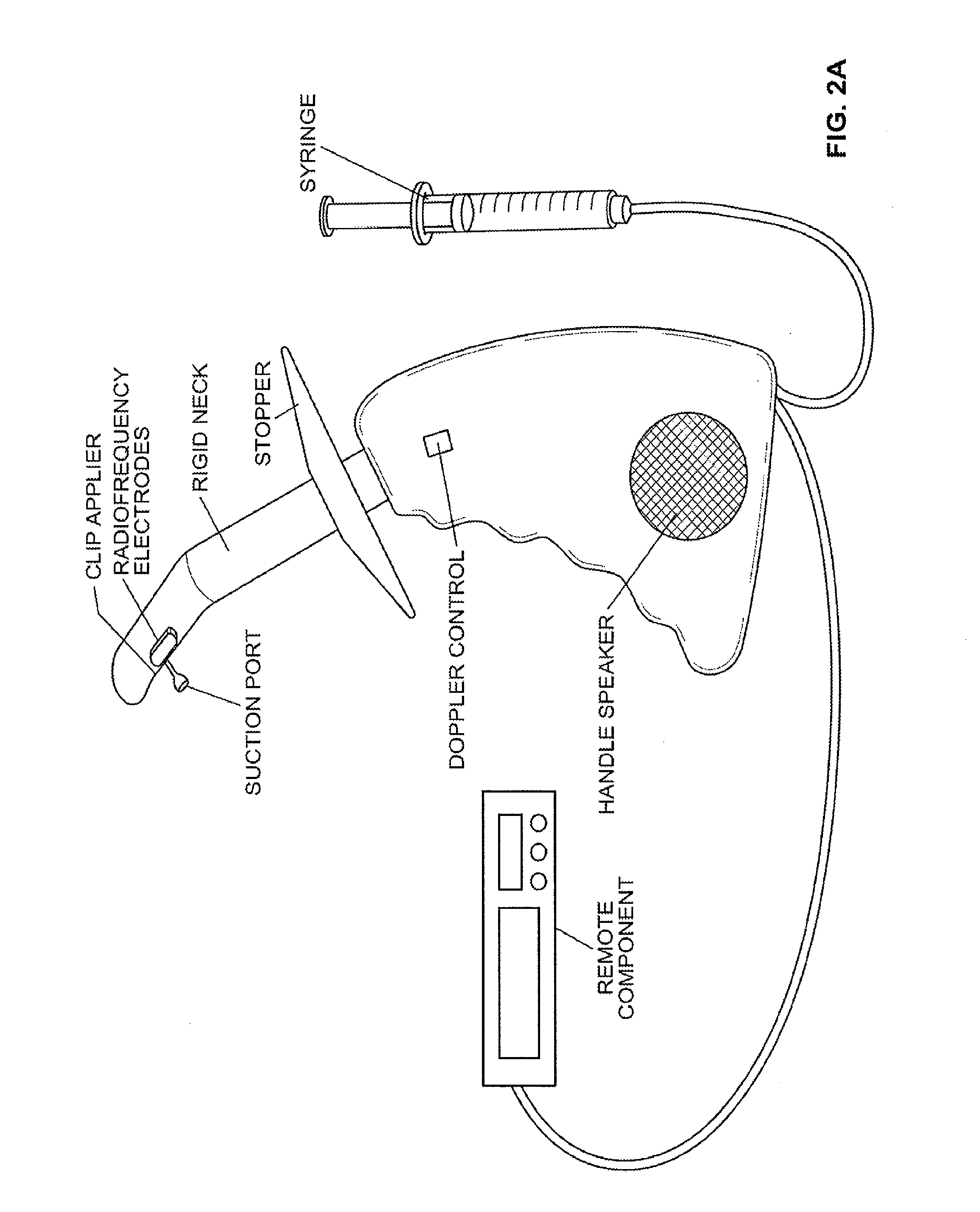Closure device and method
a technology of closure device and rectum, which is applied in the field of medical devices, can solve the problems of increasing increasing the engorgement of hemorrhoids, and increasing the ability of rectum to prolapse, so as to prevent the prolapse rate of rectum, reduce the effect of anal dilation and easy operation
- Summary
- Abstract
- Description
- Claims
- Application Information
AI Technical Summary
Benefits of technology
Problems solved by technology
Method used
Image
Examples
Embodiment Construction
[0082]This application discloses devices (i.e., apparatuses) and methods that provide a way to treat patients suffering from hemorrhoids. The apparatuses and methods can treat hemorrhoids with minimal or no pain to the patient during and / or after the procedure. The treatment can be performed outside an operation room (for example in a clinic or office setting), rapidly without the need to have multiple tool exchanges, in approximately 10 minutes, easily with minimal training or prerequisite skills required for the operator (e.g., surgeon, gastroenterologist, primary care physician, nurse, and / or the patient themselves), efficaciously with minimal reoccurrence, or combinations thereof.
[0083]As seen in FIG. 1A, the device can have about four distinct sections: a distal artery detection and ligation section, an insertion stopper section, a shaft, and a proximal handle. Coupled with the device is an ablation energy generator, such as radiofrequency, high intensity focused ultrasound (HI...
PUM
 Login to View More
Login to View More Abstract
Description
Claims
Application Information
 Login to View More
Login to View More - R&D
- Intellectual Property
- Life Sciences
- Materials
- Tech Scout
- Unparalleled Data Quality
- Higher Quality Content
- 60% Fewer Hallucinations
Browse by: Latest US Patents, China's latest patents, Technical Efficacy Thesaurus, Application Domain, Technology Topic, Popular Technical Reports.
© 2025 PatSnap. All rights reserved.Legal|Privacy policy|Modern Slavery Act Transparency Statement|Sitemap|About US| Contact US: help@patsnap.com



